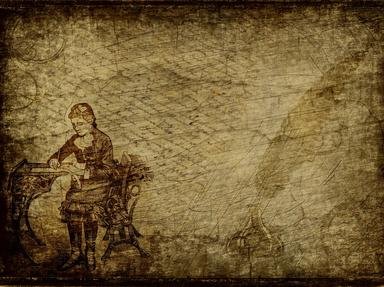Quiz Answer Key and Fun Facts
1. Let us get the boring background question out of the way first before we get to the good stuff. You can do it! In which 1950 collection of Heinlein short stories did "Let There Be Light" first appear?
2. Archibald Douglas is the male protagonist of the story. As the story opens, he is waiting for the arrival of a Dr. M. L. Martin, and to his annoyance he receives a telegram informing him that Martin will be late. He considers blowing off the appointment after this perceived insult, but he looks up Martin in a science directory. What is he NOT impressed by?
3. Where does Archibald Douglas first encounter Dr. M. L. Martin?
4. What problem have both Dr. Martin and Dr. Douglas been working on independently before they join forces?
5. After three weeks of working together, Martin and Douglas determine that one of the problems with current implementations is the fact that too much energy is being used up providing light in the infrared and ultraviolet portions of the spectrum. Dr. Martin suggests modulating wavelengths using which technique also used by amateur radio transmitters?
6. Six months after the initial idea, Dr. Douglas invites his father to view the results. "How do you like it? One hundred candle power-that'd take a hundred watts with ordinary bulbs, and we're doing it with two watts." His father is impressed, but what piece of bad news does he come bearing?
7. After his father leaves, Dr. Douglas is in a state. Dr. Martin scolds him: "Why, Archie Douglas, you great big panty-waist! You aren't going to let those mugs get away with this without a fight, are you?" What does Dr. Martin finally suggest they do?
8. After working all night, the couple tests their modified device on the roof of the factory during sunrise. The results are less than spectacular, and Dr. Martin is glum. However, Archibald Douglas tells her to relax. Why is he so confident?
9. Dr. Douglas works out the calculations for the modified device in just a short period of time. What can the device NOT do?
10. Dr. Douglas faces sabotage and threats on his life as the power companies learn of his new device. Dr. Martin convinces him of a way to solve all his problems. What is the solution?
Source: Author
OofahLandian
This quiz was reviewed by FunTrivia editor
agony before going online.
Any errors found in FunTrivia content are routinely corrected through our feedback system.
